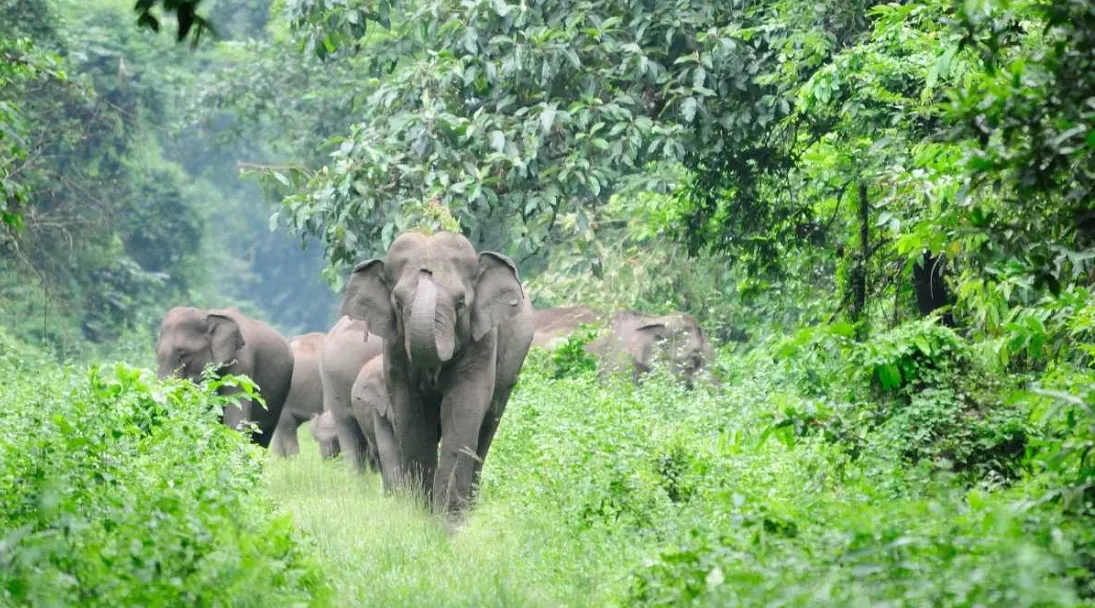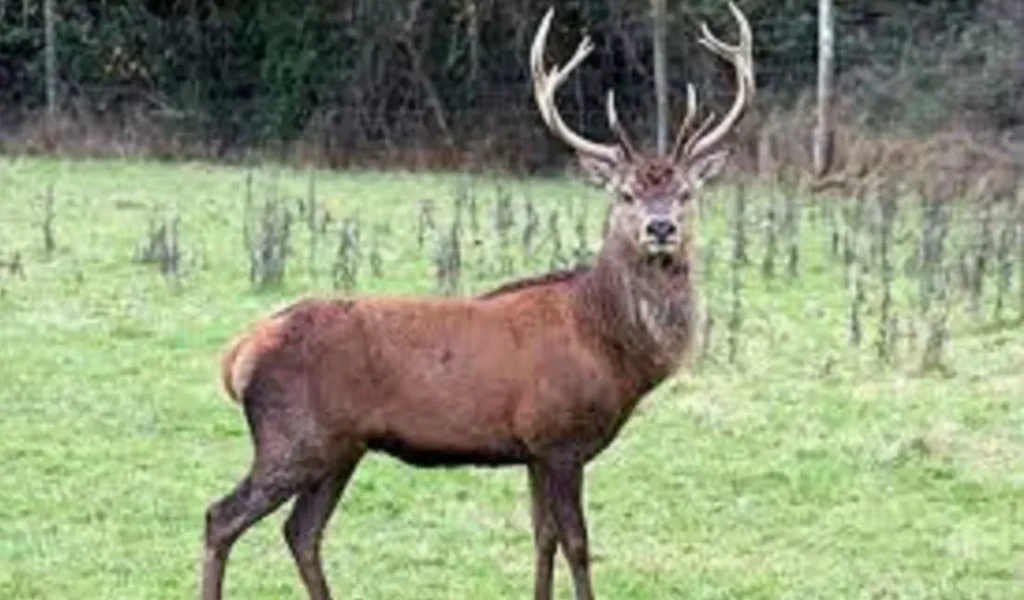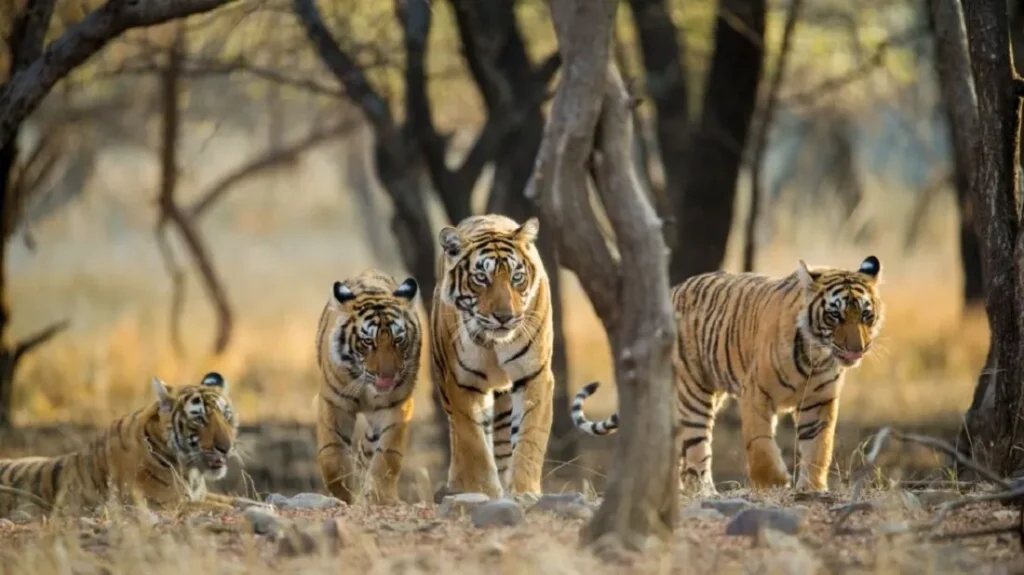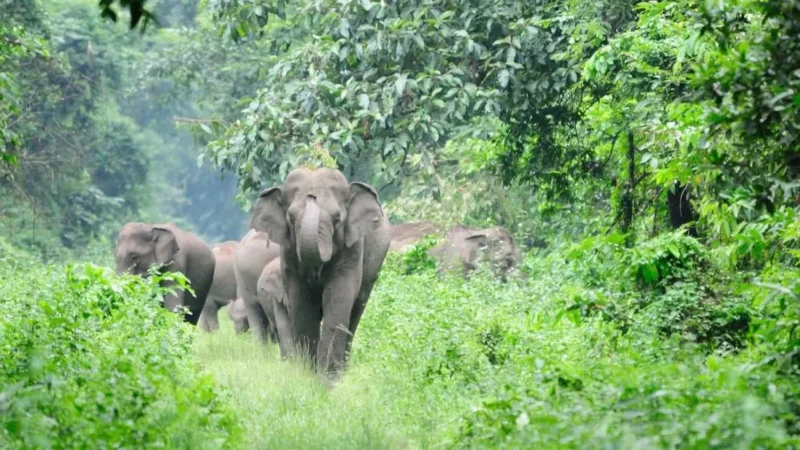Wildlife Sanctuary in Arunachal Pradesh

Table of Contents
ToggleArunachal Pradesh Wildlife Sanctuary -
Nestled in the northeastern part of India, Arunachal Pradesh is a treasure trove of biodiversity and natural wonders. Its wildlife sanctuaries offer a gateway to explore the region’s stunning landscapes, diverse flora, and fascinating fauna. From dense forests and rugged mountains to pristine rivers and picturesque valleys, Arunachal Pradesh’s wildlife sanctuaries are a paradise for nature enthusiasts, wildlife lovers, and adventure seekers.
In this blog, we will embark on an extraordinary journey through the wilderness of Arunachal Pradesh, delving into the renowned wildlife sanctuaries that dot the state. Each sanctuary’s unique charm showcases a rich tapestry of ecosystems, from alpine meadows to tropical rainforests. We will unravel the secrets of these sanctuaries, discover their wildlife inhabitants, and learn about the conservation efforts that protect these precious habitats.
1- Pakhui Wildlife Sanctuary (Pakke Tiger Reserve)
Pakhui Wildlife Sanctuary, also known as Pakke Tiger Reserve, is a significant protected area in the East Kameng district of Arunachal Pradesh, India. Established in 2002, it spans an area of approximately 862 square kilometers (333 square miles) and is recognized as one of the significant tiger reserves in the country. Here are some key details about Pakhui Wildlife Sanctuary:
- Biodiversity: Pakhui Wildlife Sanctuary is renowned for its rich biodiversity and is a crucial habitat for several endangered species. The sanctuary is home to various mammals, including the Bengal tiger, Indian elephant, clouded leopard, leopard, gaur (Indian bison), sambar deer, barking deer, wild boar, and several primates such as the capped langur, and Assamese macaque.
- Avian Paradise: The sanctuary boasts an impressive bird population, making it a paradise for birdwatchers. Over 300 species of birds have been recorded here, including the great hornbill, white-winged wood duck, wreathed hornbill, rufous-necked hornbill, and several species of eagles, owls, and woodpeckers.
- Flora: Pakhui Wildlife Sanctuary is characterized by its diverse vegetation, ranging from tropical and subtropical evergreen forests to bamboo and grassland areas. The sanctuary has various tree species, including Sal, Teak, Hollong, Amari, and several orchids.
- Ecotourism and Activities: The sanctuary offers wildlife enthusiasts and nature lovers opportunities to explore its pristine beauty. Visitors can engage in jungle safaris, birdwatching, nature walks, and photography. The Forest Department provides trained local guides to accompany visitors and offers insights into the sanctuary’s wildlife and conservation efforts.
- How to Reach Pakhui Wildlife Sanctuary
Reaching Pakhui Wildlife Sanctuary (Pakke Tiger Reserve) in Arunachal Pradesh requires a combination of road and air travel. Here are the steps to reach the sanctuary:
- By Air: The nearest airport to Pakhui Wildlife Sanctuary is Tezpur Airport in Assam, located approximately 80 kilometers (50 miles) away. You can fly to Tezpur Airport from major cities like Kolkata or Guwahati. You can hire a taxi from the airport or take a shared cab to reach the sanctuary.
- By Road: From Tezpur, you can travel by road to Seijosa, which is the entry point for Pakhui Wildlife Sanctuary. Seijosa is around 40 kilometers (25 miles) from Tezpur and can be reached in approximately 1-2 hours by taxi or shared cab. The road journey offers scenic views of the surrounding landscapes.
6- Best Time to Visit Pakhui Wildlife Sanctuary
The best time to visit Pakhui Wildlife Sanctuary is during the winter and early spring seasons, from November to April. During this period, the weather is pleasant, with clear skies, making it suitable for wildlife sightings and outdoor activities. The monsoon season, from May to October, brings heavy rainfall, making the terrain challenging and hindering wildlife sightings.
2- Dibang Wildlife Sanctuary
Dibang Wildlife Sanctuary is a renowned protected area in the Dibang Valley district of Arunachal Pradesh, India. It covers an expansive area of approximately 4,149 square kilometers (1,601 square miles), making it one of the largest wildlife sanctuaries in the country. Here’s some information about Dibang Wildlife Sanctuary:
- Biodiversity: Dibang Wildlife Sanctuary is known for its rich biodiversity and vital habitat for many flora and fauna. The sanctuary is home to several endangered and rare species, including the Mishmi takin, Asiatic black bear, clouded leopard, musk deer, and red panda. It also supports various bird species like the Blyth’s tragopan, white-winged wood duck, and great hornbill.
- Landscape: The sanctuary is characterized by its diverse topography, encompassing majestic mountains, deep valleys, dense forests, and sparkling rivers. The Dibang River, one of the major tributaries of the Brahmaputra, flows through the sanctuary, further adding to its scenic beauty.
- Flora: Dibang Wildlife Sanctuary is adorned with various vegetation, ranging from subtropical and temperate forests to alpine meadows. The sanctuary has numerous tree species, including oak, rhododendron, pine, fir, and bamboo. The dense forests provide essential habitats for the sanctuary’s diverse wildlife.
- Trekking and Exploration: The sanctuary offers exciting opportunities for nature enthusiasts and adventure seekers. Trekking is a popular activity, allowing visitors to explore the sanctuary’s rugged terrains, lush forests, and breathtaking landscapes. The trekking routes provide glimpses of the wildlife and showcase the region’s natural beauty.
- Cultural Significance: Dibang Wildlife Sanctuary is located in an area inhabited by indigenous tribes, including the Idu Mishmi and Adi communities. These tribes have a rich cultural heritage and maintain a close connection with the sanctuary’s natural surroundings. The sanctuary provides insights into their traditional practices and offers a chance to experience their way of life.
- How to Reach Dibang Wildlife Sanctuary
Reaching Dibang Wildlife Sanctuary in Arunachal Pradesh requires a combination of road and air travel. Here are the steps to reach the sanctuary:
- By Air: The nearest airport to Dibang Wildlife Sanctuary is Dibrugarh Airport in Assam, located approximately 200 kilometers (124 miles) away. You can fly to Dibrugarh Airport from major cities like Delhi, Kolkata, or Guwahati. You can hire a taxi from the airport or take a shared cab to reach the sanctuary.
- By Road: From Dibrugarh, you can travel to Roing, the gateway to Dibang Wildlife Sanctuary. The distance between Dibrugarh and Roing is approximately 150 kilometers (93 miles) and can be covered in around 5-6 hours by taxi or shared cab. The road journey offers scenic views of the surrounding landscapes and passes through picturesque towns and villages.
7- Best Time to Visit Dibang Wildlife Sanctuary
The best time to visit Dibang Wildlife Sanctuary is from November to April. Pleasant weather, moderate temperatures, and clear skies characterize this period. It is the ideal time for wildlife sightings, trekking, and exploring the sanctuary’s natural beauty.
During the monsoon season, the region experiences heavy rainfall from May to October, making the terrain challenging and roads slippery. It is advisable to avoid visiting during this time as it may hinder travel and wildlife sightings.
3- Mehao Wildlife Sanctuary
Mehao Wildlife Sanctuary is a prominent protected area in the Lower Dibang Valley district of Arunachal Pradesh, India. Established in 1980, it spans approximately 281 square kilometers (108 square miles) and is known for its diverse flora and fauna. Here is some information about Mehao Wildlife Sanctuary:
- Biodiversity: Mehao Wildlife Sanctuary is renowned for its rich biodiversity and is home to many flora and fauna. Its dense forests, alpine meadows, and crystal-clear streams characterize the sanctuary. It houses various species of mammals, including the Bengal tiger, clouded leopard, leopard, Himalayan black bear, sambar deer, barking deer, and capped langur. It is also a paradise for birdwatchers, with over 300 species of birds recorded, including the white-winged wood duck, great hornbill, and the rare and elusive Rufous-necked hornbill.
- Scenic Beauty: Mehao Wildlife Sanctuary offers breathtaking landscapes and picturesque views. The sanctuary is nestled amidst the lush greenery of the Eastern Himalayas, and its terrain is adorned with majestic mountains, dense forests, and meandering streams. The serene atmosphere and natural beauty make it an ideal destination for nature enthusiasts and photographers.
- Trekking and Nature Trails: The sanctuary provides trekking and nature exploration opportunities. Several trekking routes lead to scenic viewpoints and hidden gems within the sanctuary. These treks allow visitors to immerse themselves in the beauty of the surroundings and observe the diverse flora and fauna along the way.
- Flora: Mehao Wildlife Sanctuary boasts a wide variety of plant species. The forests are home to diverse trees, including oak, pine, rhododendron, bamboo, and ferns. The sanctuary’s flora contributes to the ecosystem and provides essential habitats for the resident wildlife.
- Conservation Efforts: The sanctuary plays a crucial role in conserving and protecting its unique ecosystem. The forest department and local communities actively participate in conservation activities, including anti-poaching measures, habitat restoration, and raising awareness about wildlife conservation.
- Accessibility: The sanctuary is located approximately 17 kilometers (10.5 miles) from Roing, the district headquarters of Lower Dibang Valley. Roing is well-connected by road, and visitors can reach the sanctuary by hiring a taxi or taking a shared cab.
- Best Time to Visit: The best time to visit Mehao Wildlife Sanctuary is from October to April. The weather is pleasant during this period, with mild temperatures and clear skies, making it ideal for wildlife sightings and outdoor activities. It is advisable to avoid the monsoon season, from May to September, as heavy rainfall can make the trails slippery and hinder travel.

4- Sessa Orchid Sanctuary
Sessa Orchid Sanctuary is a renowned protected area in the West Kameng district of Arunachal Pradesh, India. Established in 1989, it covers an area of approximately 100 square kilometers (39 square miles) and is dedicated to the conservation and preservation of various species of orchids. Here is some information about Sessa Orchid Sanctuary:
- Orchid Diversity: Sessa Orchid Sanctuary is known for its remarkable orchid diversity, with over 200 species of orchids found within its boundaries. It is home to a wide range of orchid varieties, including rare and endangered species. The sanctuary provides a favorable environment for these delicate flowers to flourish, with its pristine forests, cool climate, and high humidity.
- Flora and Fauna: Apart from orchids, Sessa Orchid Sanctuary also supports a diverse range of flora and fauna. The sanctuary is covered with lush green forests of oak, rhododendron, bamboo, and other tree species. The dense vegetation provides a suitable habitat for numerous animal species, including the red panda, goral, Himalayan black bear, and various bird species.
- Trekking and Nature Trails: Sessa Orchid Sanctuary offers nature enthusiasts and trekkers opportunities to explore its natural beauty. Several trekking routes and nature trails allow visitors to immerse themselves in the breathtaking landscapes and observe the diverse flora and fauna. The trails provide a chance to spot orchids in their natural habitat and enjoy the serenity of the surroundings.
- Conservation Efforts: The sanctuary plays a significant role in the conservation and protection of orchids. Efforts are made to preserve the fragile ecosystem and raise awareness about the importance of orchid conservation. The forest department and local communities implement measures to prevent illegal activities such as poaching and logging, ensuring the sustainability of the sanctuary.
- Accessibility: Sessa Orchid Sanctuary is located approximately 20 kilometers (12 miles) from Bhalukpong, a town in the West Kameng district. Bhalukpong is well-connected by road, and visitors can hire a taxi or take a shared cab to reach the sanctuary.
- Best Time to Visit: The best time to visit Sessa Orchid Sanctuary is from March to May, when most of the orchids bloom. The weather during this period is pleasant, and the orchids create a vibrant display of colors. It is advisable to avoid the monsoon season, from June to September, as heavy rainfall can make the trails slippery and hinder travel.
5- Eaglenest Wildlife Sanctuary
Eaglenest Wildlife Sanctuary is a prominent protected area in the West Kameng district of Arunachal Pradesh, India. Established in 1989, the sanctuary covers an area of approximately 218 square kilometers (84 square miles) and is known for its incredible biodiversity and stunning landscapes. Here is some information about Eaglenest Wildlife Sanctuary:
- Biodiversity: Eaglenest Wildlife Sanctuary is recognized as one of the most biodiverse regions in the Eastern Himalayas. It is home to many flora and fauna, including several rare and endangered species. The sanctuary is characterized by its lush green forests, cascading waterfalls, and rugged terrains. It is renowned for its diverse birdlife, with over 454 species of birds recorded, including the endangered Bengal florican, beautiful nuthatch, and chestnut-breasted partridge. The sanctuary is also home to mammals such as the clouded leopard, Asiatic black bear, red panda, and marbled cat.
- Scenic Beauty: The sanctuary’s scenic beauty is a major attraction for nature enthusiasts and photographers. It is nestled amidst the Eastern Himalayas, with majestic snow-capped peaks, verdant valleys, and glistening rivers. The diverse topography of the sanctuary offers breathtaking views and numerous opportunities for exploration.
- Trekking and Nature Trails: Eaglenest Wildlife Sanctuary offers excellent trekking and nature trail options for adventure enthusiasts. The trails take visitors through dense forests, meadows, and mountain passes, providing a chance to witness the sanctuary’s rich biodiversity up close. The Bugun tribe, indigenous to the region, often serve as guides, sharing their knowledge about the local flora, fauna, and cultural heritage.
- Orchid Paradise: The sanctuary is renowned for its orchid diversity, with over 400 species within its boundaries. Orchid enthusiasts and botanists visit Eaglenest Wildlife Sanctuary to witness the exquisite display of colorful orchids in their natural habitat. The sanctuary is a treasure trove for orchid lovers.
- Community Conservation Initiatives: The local communities around Eaglenest Wildlife Sanctuary actively participate in conservation efforts. They are crucial in protecting the sanctuary’s biodiversity and contributing to sustainable tourism practices. Visitors can engage with the communities, learn about their traditions and customs, and support their livelihoods through responsible tourism.
- Accessibility: The nearest town to Eaglenest Wildlife Sanctuary is Bomdila, approximately 215 kilometers (133 miles) away. Bomdila is well-connected by road, and from there, visitors can hire a taxi or take a shared cab to reach the sanctuary. The journey to the sanctuary offers scenic views of the Himalayan landscapes and is an adventure.
- Best Time to Visit: The best time to visit Eaglenest Wildlife Sanctuary is during October to April. The weather during this period is generally pleasant, with clear skies, making it ideal for wildlife sightings and outdoor activities. However, it’s important to note that weather conditions in the region can be unpredictable, and it’s advisable to check the local forecast before planning your visit.
6- Kamlang Wildlife Sanctuary
Kamlang Wildlife Sanctuary is a well-known protected area in the Lohit district of Arunachal Pradesh, India. Established in 1989, the sanctuary spans an area of approximately 783 square kilometers (302 square miles) and is renowned for its diverse flora, fauna, and scenic landscapes. Here is some information about Kamlang Wildlife Sanctuary:
- Biodiversity: Kamlang Wildlife Sanctuary is recognized for its rich biodiversity and is an important habitat for many plant and animal species. The sanctuary is covered with dense forests of various tree species, including oak, pine, bamboo, and ferns. It is home to several mammals, including the clouded leopard, leopard, Asiatic black bear, elephant, deer species, and many more. The sanctuary is also known for its avian diversity, with over 150 species of birds recorded, including the white-winged wood duck, hornbills, and various migratory birds.
- Scenic Beauty: Kamlang Wildlife Sanctuary offers breathtaking landscapes and picturesque views. It is surrounded by the Eastern Himalayas and is characterized by its rolling hills, deep valleys, sparkling rivers, and waterfalls. The sanctuary’s pristine natural beauty makes it a paradise for nature lovers and photographers.
- Trekking and Nature Trails: The sanctuary provides trekking and nature exploration opportunities. Several trekking routes and nature trails allow visitors to immerse themselves in the stunning landscapes and experience the sanctuary’s biodiversity up close. The trails take you through thick forests, serene meadows, and scenic viewpoints, allowing you to spot wildlife and appreciate the natural surroundings.
- Flora and Fauna Conservation: Kamlang Wildlife Sanctuary is crucial in conserving the region’s flora and fauna. The forest department manages the sanctuary, which focuses on protecting the habitat, preventing illegal activities such as poaching and logging, and raising awareness about conservation among local communities and visitors.
- Cultural Significance: The sanctuary is a haven for wildlife and holds cultural significance. It is home to indigenous tribal communities, including the Mishmi tribe, who deeply connect with the land and its resources. Engaging with the local communities provides an opportunity to learn about their traditional practices, customs, and folklore, enriching your overall experience.
- Accessibility: The nearest town to Kamlang Wildlife Sanctuary is Tezu, approximately 100 kilometers (62 miles) away. Tezu is well-connected by road, and visitors can hire a taxi or take a shared cab to reach the sanctuary. The journey to the sanctuary offers scenic views of the surrounding landscapes and provides an immersive experience of the region’s natural beauty.
- Best Time to Visit: The best time to visit Kamlang Wildlife Sanctuary is from October to April. The weather during this period is generally pleasant, with moderate temperatures and clear skies, making it ideal for wildlife sightings and outdoor activities. However, checking the local weather conditions before planning your visit is advisable, as the region can experience heavy rainfall during the monsoon season.

7- Daying Ering Wildlife Sanctuary
Daying Ering Wildlife Sanctuary is a significant protected area in the East Siang district of Arunachal Pradesh, India. Established in 1978, the sanctuary spans approximately 190 square kilometers (73 square miles) and is named after the renowned social worker and politician Late Daying Ering. Here is some information about Daying Ering Wildlife Sanctuary:
- Location and Landscape: Daying Ering Wildlife Sanctuary is situated at the confluence of the Siang and Lohit rivers in the northeastern part of Arunachal Pradesh. The sanctuary is characterized by its extensive riverine habitats, floodplains, grasslands, and wetlands. It showcases a unique ecosystem influenced by the dynamic river systems and offers various habitats for various species.
- Avian Biodiversity: The sanctuary is mainly known for its rich avian diversity. It serves as an essential habitat for numerous resident and migratory bird species. Over 200 bird species have been recorded in the sanctuary, including several rare and endangered species such as the Bengal florican, greater adjutant stork, black-necked crane, and white-bellied heron. Birdwatching enthusiasts and ornithologists visit the sanctuary to witness the remarkable birdlife.
- Flora and Fauna: Daying Ering Wildlife Sanctuary supports various flora and fauna. The vegetation in the sanctuary includes grasslands, reed beds, and patches of moist deciduous forests. The sanctuary is home to various mammal species, including elephants, sambar deer, hog deer, wild boar, and small carnivores like the Bengal fox and jungle cat. The riverine habitats harbor reptiles, amphibians, and diverse aquatic species.
- Unique Riverine Ecosystem: The sanctuary’s location at the confluence of two major rivers contributes to its distinct ecosystem. The Siang and Lohit rivers provide important feeding and breeding grounds for various aquatic species. The wetlands and marshes within the sanctuary support a rich aquatic biodiversity, including fishes, turtles, and waterfowl.
- Conservation and Ecotourism: Daying Ering Wildlife Sanctuary is managed by the Arunachal Pradesh Forest Department, which focuses on conservation efforts and ecotourism development. The sanctuary offers opportunities for activities like birdwatching, river safaris, and nature trails. Local communities are actively involved in promoting responsible tourism and raising awareness about the importance of conservation.
- Accessibility: The sanctuary is located near Pasighat, which is well-connected by road and can be reached from major cities in Arunachal Pradesh. Visitors can hire taxis or use public transport to reach Pasighat, from where they can access the sanctuary.
- Best Time to Visit: The best time to visit Daying Ering Wildlife Sanctuary is during the winter months, from November to February, when the weather is relatively dry and comfortable. This period also coincides with the arrival of several migratory bird species, offering excellent birdwatching opportunities.
8- Talley Valley Wildlife Sanctuary
Talley Valley Wildlife Sanctuary is a prominent protected area located in the state of Arunachal Pradesh, India. It is nestled in the picturesque Ziro Valley, known for its scenic beauty and rich cultural heritage. Here is some information about Talley Valley Wildlife Sanctuary:
- Location and Landscape: Talley Valley Wildlife Sanctuary is situated in the Lower Subansiri district of Arunachal Pradesh. The sanctuary covers an area of approximately 337 square kilometers (130 square miles) and is characterized by its lush green forests, sprawling meadows, and diverse flora and fauna. Lofty mountains surround it and offer breathtaking views of the surrounding landscapes.
- Biodiversity: The sanctuary is home to various plant and animal species, making it a haven for nature enthusiasts and wildlife lovers. Diverse tree species, including oak, pine, bamboo, and rhododendron, dominate the dense forests of Talley Valley. The sanctuary is known for its rich avian diversity, with over 100 bird species recorded, including the beautiful and rare Himalayan monal, white-winged wood duck, and various species of pheasants. It is also home to several mammal species, such as the clouded leopard, red panda, Himalayan black bear, and numerous deer species.
- Trekking and Nature Trails: Talley Valley Wildlife Sanctuary offers excellent trekking and nature exploration opportunities. The sanctuary features several trekking routes and nature trails that take visitors through its pristine forests, meadows, and picturesque landscapes. The trails offer a chance to witness the sanctuary’s flora and fauna up close and provide breathtaking views of the surrounding mountains and valleys.
- Cultural Significance: The sanctuary is not only known for its natural beauty but also holds cultural significance. It is inhabited by the Apatani tribe, one of the major indigenous tribes of Arunachal Pradesh. The Apatani people have a unique cultural heritage and are known for their sustainable agricultural practices, intricate handloom weaving, and distinctive facial tattoos. Interacting with the local community can provide insights into their traditional way of life and cultural traditions.
- Conservation Efforts: The forest department and local communities actively participate in conserving Talley Valley Wildlife Sanctuary. Efforts are made to protect the habitat, prevent illegal activities such as poaching and logging, and raise awareness about the importance of biodiversity conservation among the local population and visitors.
- Accessibility: The nearest town to Talley Valley Wildlife Sanctuary is Ziro, which is well-connected by road and can be reached from major cities in Arunachal Pradesh. From Ziro, visitors can hire taxis or use public transport to reach the sanctuary.
- Best Time to Visit: The best time to visit Talley Valley Wildlife Sanctuary is during October to April when the weather is relatively pleasant and the chances of rainfall are lower. The winter months, especially December and January, offer clear skies and excellent visibility for enjoying the sanctuary’s natural beauty.
Conclusion -
In conclusion, Arunachal Pradesh, located in northeastern India, is blessed with many wildlife sanctuaries that showcase the region’s incredible biodiversity and natural beauty. These sanctuaries provide a haven for numerous plant and animal species, making them a paradise for nature enthusiasts, wildlife photographers, and adventure seekers.
From the majestic snow-capped peaks of the Himalayas to the dense forests and vibrant river valleys, each wildlife sanctuary in Arunachal Pradesh offers a unique and immersive experience. The state is home to renowned sanctuaries like Namdapha National Park, Pakke Tiger Reserve, Daying Ering Wildlife Sanctuary, Talley Valley Wildlife Sanctuary, and many more.
These sanctuaries safeguard the diverse flora and fauna and play a crucial role in conservation efforts, research, and raising awareness about the importance of preserving our natural heritage. Local communities and forest departments actively participate in the conservation and sustainable management of these sanctuaries, ensuring the protection of wildlife and their habitats.
Visiting the wildlife sanctuaries in Arunachal Pradesh allows visitors to witness the rich avian diversity, spot elusive big cats, explore dense forests teeming with wildlife, and experience the cultural heritage of indigenous communities. Trekking, birdwatching, river safaris, and nature trails are among the activities that offer an up-close and personal encounter with the wonders of nature.

